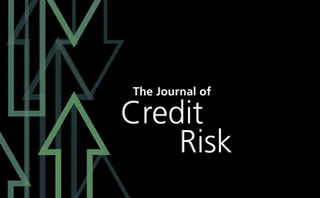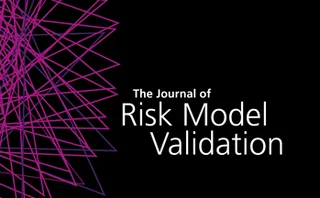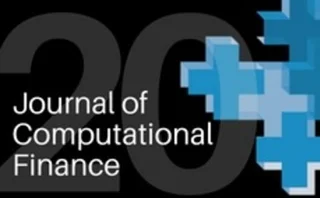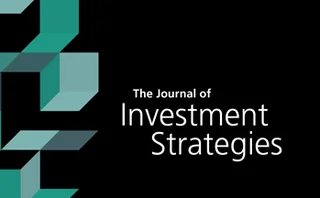Monte Carlo simulation
Portfolio credit risk model with extremal dependence of defaults and random recovery
This paper proposes a portfolio credit risk model with random recovery rates.
TriOptima adds MVA calculations to XVA service
Three firms have signed up to use the tool, which calculates MVA across 100,000 scenarios
On modeling zero-inflated insurance data
The authors of this paper use power series distributions to develop a novel and flexible zero-inflated Bayesian methodology.
An efficient convergent lattice method for Asian option pricing with superlinear complexity
In this paper the authors present an efficient convergent lattice method for Asian option pricing with superlinear complexity.
Valuation of barrier options using sequential Monte Carlo
The authors present Sequential Monte Carlo (SMC) method for pricing barrier options.
Rapidly bounding the exceedance probabilities of high aggregate losses
The authors of this paper assess the right-hand tail of an insurer’s loss distribution for a specified period (a year), presenting and analyzing six different approaches in doing so.
A mixed Monte Carlo and partial differential equation variance reduction method for foreign exchange options under the Heston–Cox–Ingersoll–Ross model
The paper concerns a hybrid pricing method build upon a combination of Monte Carlo and PDE approach for FX options under the four-factor Heston-CIR model.
An exact and efficient method for computing cross-Gammas of Bermudan swaptions and cancelable swaps under the Libor market model
A new simulation algorithm for computing the Hessians of Bermudan swaptions and cancelable swaps is presented.
Paper of the year: PJ de Jongh, Tertius de Wet, Kevin Panman and Helgard Raubenheimer
South African academics pioneer a quick and easy way of estimating op risk capital
Transform-based evaluation of prices and Greeks of lookback options driven by Lévy processes
The authors develop a technique, based on numerical inversion, to compute the prices and Greeks of lookback options driven by Lévy processes.
Faster comparison of stopping times by nested conditional Monte Carlo
The authors propose a novel method for efficiently comparing the performance of different stopping times.
The UK carbon floor and power plant hedging
How to calculate expected future carbon costs and optimal valuation and hedging decisions, by adjusting Monte Carlo simulations for the UK market
Optimal trading with alpha predictors
This paper studies the problem of optimal trading using general alpha predictors with linear costs and temporary impact.
Liability-side pricing of swaps
Wujiang Lou presents a framework to compute recursive CVA and FVA via Monte Carlo simulation
Value-at-risk time scaling: a Monte Carlo approach
This paper discusses a VaR time-scaling approach based on fitting a distribution function so as to apply a Monte Carlo simulation to determine long-term VaR.
Wiener chaos expansion and numerical solutions of the Heath–Jarrow–Morton interest rate model
The authors propose an efficient, novel numerical scheme for solving the stochastic Heath–Jarrow–Morton interest rate model.
The efficient application of automatic differentiation for computing gradients in financial applications
Automatic differentiation is the theme of this paper. The authors show that many functions in calibration and inverse problems, exhibit a natural substitution structure. A significant speedup is achieved compared with common reverse-mode AD.
CVA with Greeks and AAD
Reghai, Kettani and Messaoud present new technique to calculate CVA using adjoints
Importance sampling for jump processes and applications to finance
Adaptive importance sampling techniques are widely known for the Gaussian setting of Brownian-driven diffusions. In this paper, the authors extend them to jump processes.
A non-linear PDE for XVA by forward Monte Carlo
Vladimir Piterbarg considers a non-linear partial differentiation equation that appears in a number of XVA-related contexts, including a one-way credit-support annex, credit value adjustment with risky closeout, option pricing with differential borrowing…
Loss given default modeling: an application to data from a Polish bank
This paper compares two methods of estimating LGD: a beta regression model and a multinomial logit (MNL) model.
Network-based measures as leading indicators of market instability: the case of the Spanish stock market
This paper identifies links between time series data of stock returns for the purpose of understanding the structure of the market and for identifying early-warning signals of forthcoming market stress.
Cutting Edge introduction: Sticky SABR
Quants develop a hassle-free model that can handle negative interest rates












